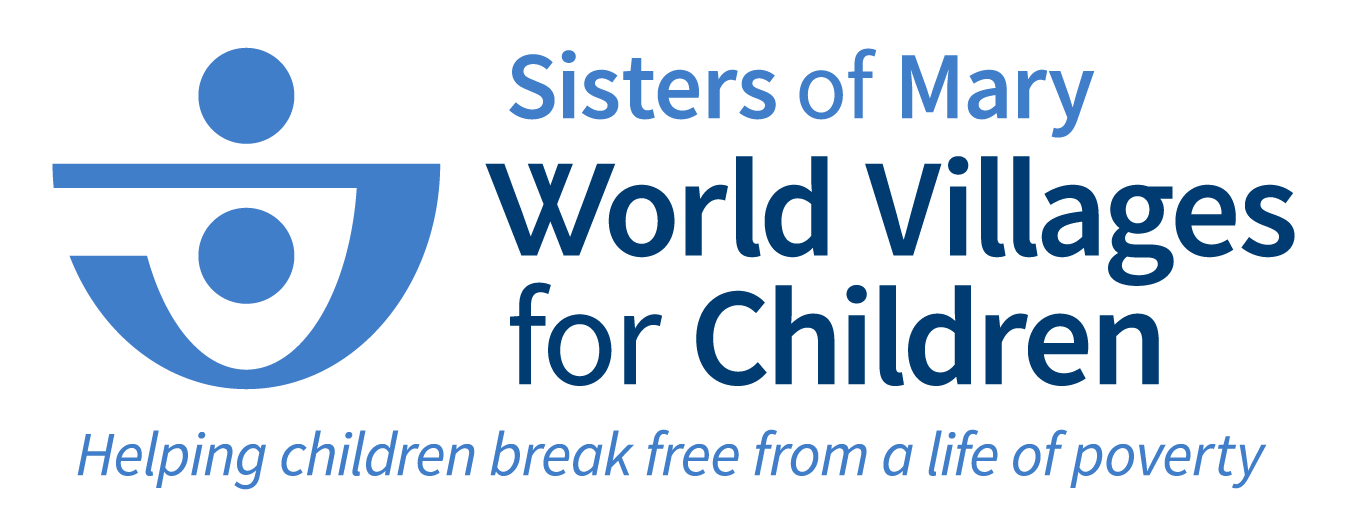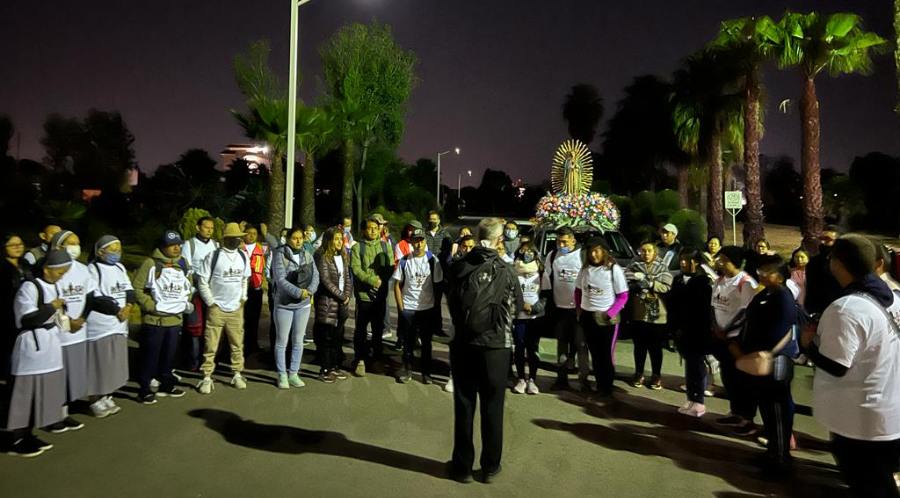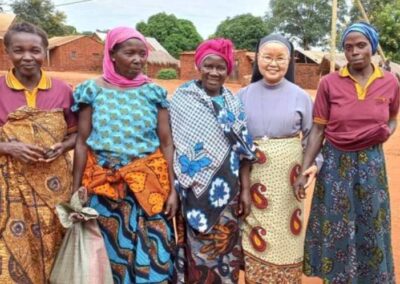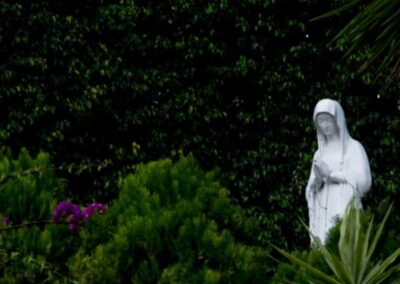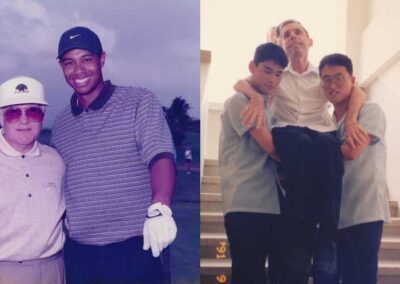Walking to Guadalupe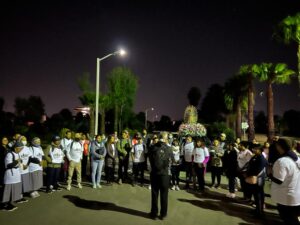
CHALCO – Fr. Dan Leary, five sisters from the Sisters of Mary community, teachers, employees, and more than 170 graduates from Boystown and Girlstown communities felt the need to keep things light on their 25-mile walking pilgrimage to the Basilica of Our Lady of Guadalupe this past Sunday. So periodically, a single question became a sort of running joke that filtered through the caravan during their long walk.
“Are we there yet?”
As the mass migration to Our Lady proceeded through congested Mexican backstreets, major thoroughfares, merge lanes, and crowded sidewalks, Fr. Dan Leary – who may have asked “are we there yet” more than anyone else – began to consider the words more deeply. As the hours passed, he began to take the question into his heart.
“No,” he thought to himself. “We’re never there.”
Like most of the pilgrims he walked beside, his mind gravitated to the founder of the Sisters of Mary religious community and builder of Boystowns and Girlstowns worldwide Venerable Aloysius Schwartz.
Pilgrimages like these are taken in some fashion every day throughout the world. But Sunday’s twelve-hour walk was not like most. The majority of pilgrims had endured profound suffering at a point in their lives, which was why they walked on, Fr. Al’s spirit periodically rose in them like a bright Alleluia of hope and strength. For the entirety of his priesthood, Fr. Al picked up the violent cross of his priesthood and walked down the world’s poorest roads and alleyways as an image of the Slaughtered Lamb. His journey took him past rejection, a thieving bishop, calumny, physical and spiritual attacks, poverty, and debilitating disease. He, alas, arrived nailed to a wheelchair, suffering from ALS, at the altar of Golgotha, where on those bloody rocks, he looked into the face of Mary and said: All of this is for you – give it to your Son, the Starved Man who hangs there suffering for us
Are we there yet? No.
Forty Days of Lent
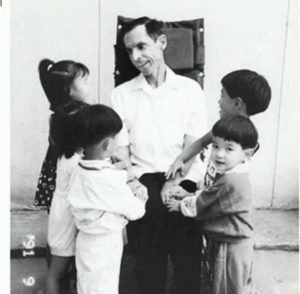
Fr. Al, while suffering with ALS
Do forty days of Lenten pilgrimage to Easter mark our ending point? No – but this sacred time beginning today could mark a real point of departure into conversion.
“We’re never really ‘there’ until we rest in God’s arms,” Fr. Dan said. “At least that’s what Fr. Al would have told us on Sunday. Fr. Al never once stopped … Well, he stopped when he could no longer move. But even then, with ALS, he just kept moving. Essentially this past Sunday, we had a dead man, a future saint, who was pushing us when our legs were giving out.”
But isn’t that precisely what saints do? Fr. Al spent his entire priesthood pushing things, moving forward, and testing his body – with no regard for his own comforts, or in many cases – anyone else’s opinion. Not a single person, including every one of his family members, agreed with the decision to leave the Maryknoll missionary order in America and move halfway across the world to Belgium to serve with an obscure order of missionary priests called the Societe des Auxilaires. But Fr. Al felt Our Lady’s call to serve the poorest of the poor – and her call to him was all that mattered. In a sense – his pilgrimage started the day he boarded a ship headed to Europe when he obliged Mary’s call to serve her Son as a “poor-man priest.” She called for him every day thereafter. And he never stopped, until his body finally collapsed from ALS at the age of 62 in 1992.
Fr. Al and Always Moving Forward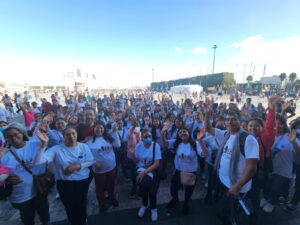
Fr. Al’s lifelong pilgrimage was heavy on the minds of Sunday’s few hundred pilgrims, all of whom pray the Church will soon recognize him as a canonized saint. Fr. Dan was also considering Fr. Al as he carried the hundreds of prayer petitions in his backpack, sent his way from different parts of the world. He offered those prayers at a Mass he celebrated later that day at the Basilica of Our Lady of Guadalupe. On the altar, he felt solidarity with both Fr. Al and Our Lady.
“The real intention for the pilgrimage was for the beatification and canonization of Fr Al,” Fr. Dan said. “Passersby could see the T-shirts – “We are the miracles of Father Al.” But the pilgrimage was also a way to give gratitude to Our Lady of Guadalupe. Our walk was a return to her out of our love for her. Drivers kept honking [in a joy-filled way]. They saw the beautiful flowers and three-foot statue of Our Lady on top of the car that led us on one pilgrimage.”
“We all carried Fr. Al with us in our minds. We all have a longing to live in Fr. Al’s love and to walk with the same heart,” said Alicia Soto Juarez, a graduate of Girlstown. “As far as my connection to Father Al on the pilgrimage, I gave him my fear of giving up. When I thought I could not continue, I asked him to share his strength with me. I told him that I could not get there without it – and I finished.”
One graduate of Girlstown said she and other graduates felt a great merging of love for Mary and Fr. Al throughout the journey. “As graduates, the pilgrimage was of course a manifestation of our love and devotion to Our Lady as her children, and also, as children of Father Al,” she said. “That together, we can do something physical and spiritual and at the same time proclaim to many people that we are Father Al’s miracles.”
Fr. Al saw the indwelling of Christ most powerfully in painstaking acts of love, like Sunday’s pilgrimage. He saw Christ most powerfully in the ascetics, martyrs, and saints with grinding work ethics, gravitating toward Charles de Foucauld, Teresa of Avila, John Vianney, Don Bosco, and Damien of Molokai. He wrote tenderly early in his priesthood about being moved by de Foucauld launching out into the bleakness of the Algerian desert for the poor and unbaptized and by St. Francis of Assisi throwing off every degree of comfort to renounce his life for Christ. Fr. Al articulated this severe method of forsakenness in the following way to the sisters in his community.
The saints Fr. Al most loved were always moving forward, always on pilgrimage.
Fr. Al once wrote to his religious community: “In the psalms, the Holy Spirit says, and he is quoting God, ‘I dwell in a place which is dry and waterless.’ God dwells in the desert; he dwells in nothingness, emptiness, and extreme poverty. If you want to find God, renounce all your possessions and seek God. Jesus died poor on the cross. He is stripped naked. He has no good reputation. He gives his mother. He is alone. His disciples have left him, and he has no friends. The blood leaves his body – and life leaves his body … Jesus says, ‘If you wish to be my disciple, you must renounce all that you possess.’ All means visible possessions and invisible possessions. What is on the outside, what is on the inside – all.”
Are We There Yet?
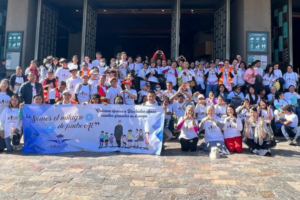 With Lent beginning today, the same question Sunday’s pilgrims asked might be a good for us: Are we there yet?
With Lent beginning today, the same question Sunday’s pilgrims asked might be a good for us: Are we there yet?
The answer is, of course, No. But the wonder and transcendent beauty of the difficult journey of our life – such as a pilgrimage to a shrine or a renunciation of our comforts – brings us closer to the sacred bosom of Christ, our final destination. And that is where Fr. Al points us, even today.
“To imitate Jesus, then, it is not enough to sacrifice and suffer now and then. It is not a sometime kind of thing, an Advent or Lent type of penance,” he wrote in To Live Is Christ, his book on spirituality to the Sisters of Mary. “On the contrary, if one wishes to resemble Jesus and to be remade into his image and likeness, one must suffer daily, develop the habit of sacrifice, and constantly choose what is uncomfortable rather than what is comfortable.”
